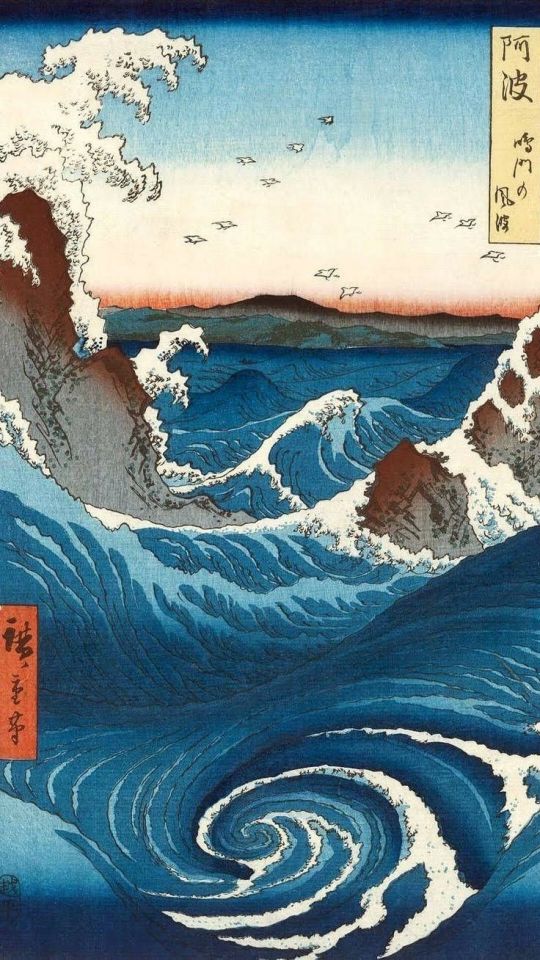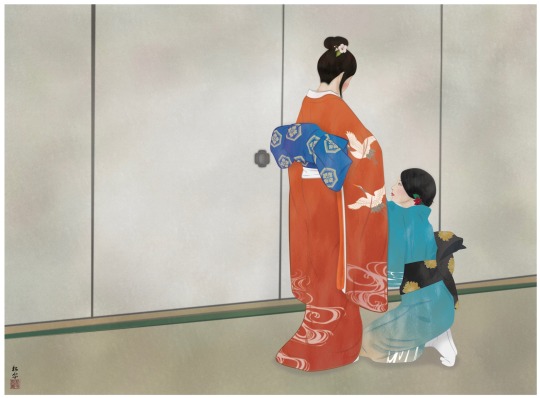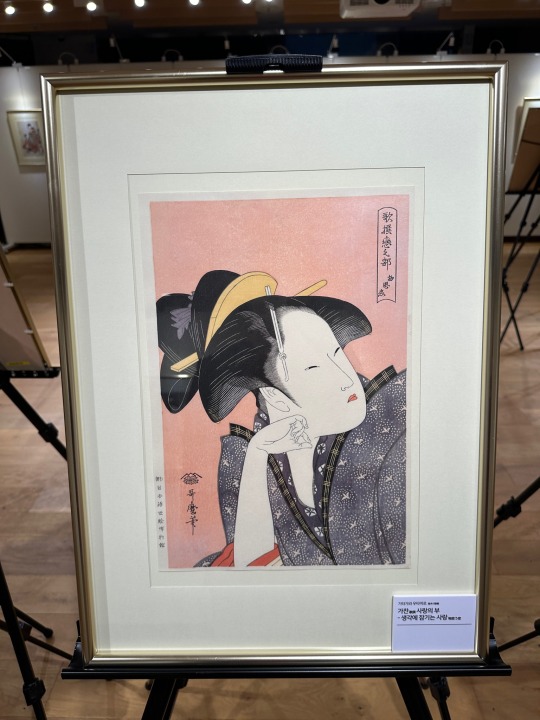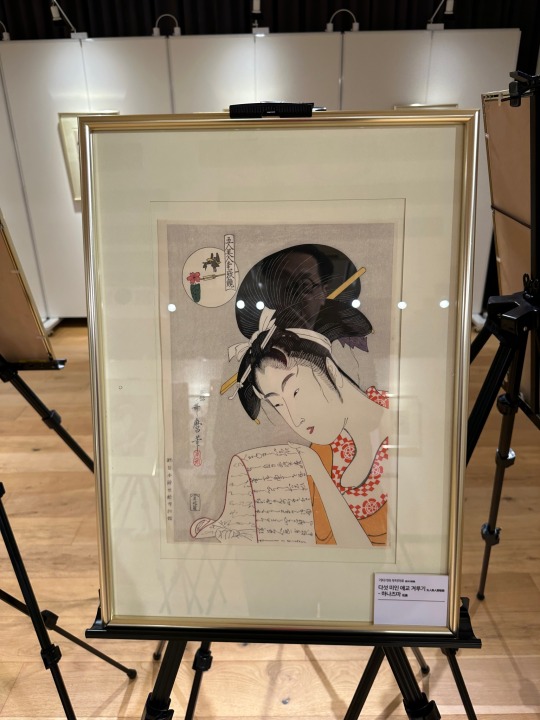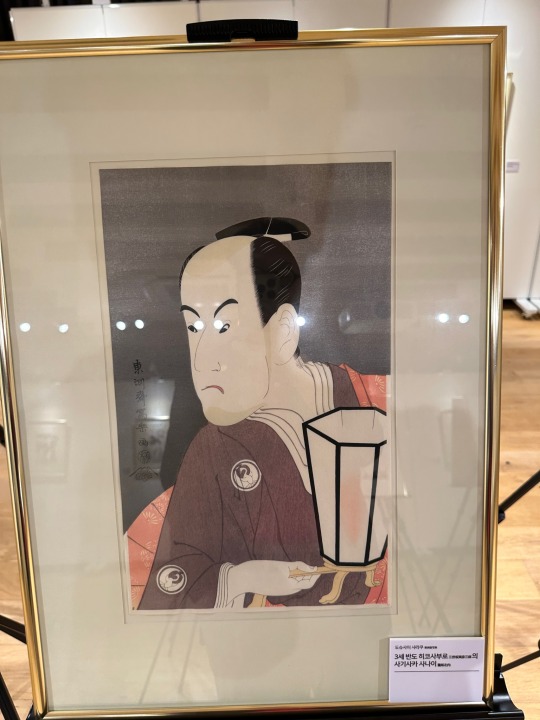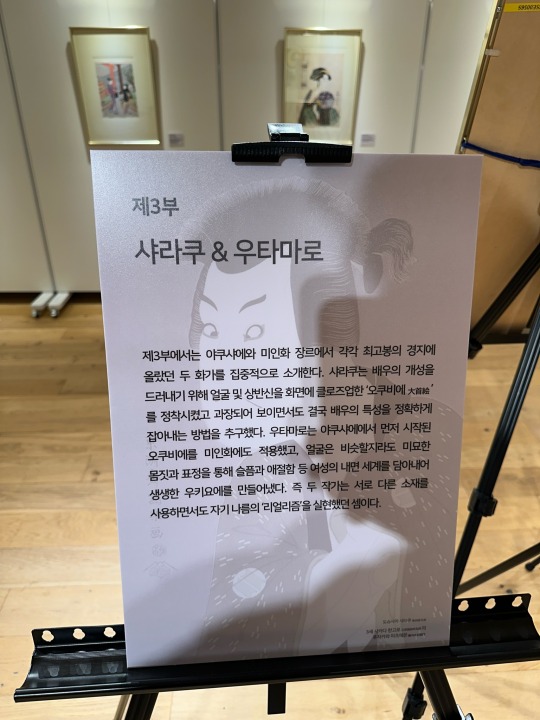#浮世絵
Text
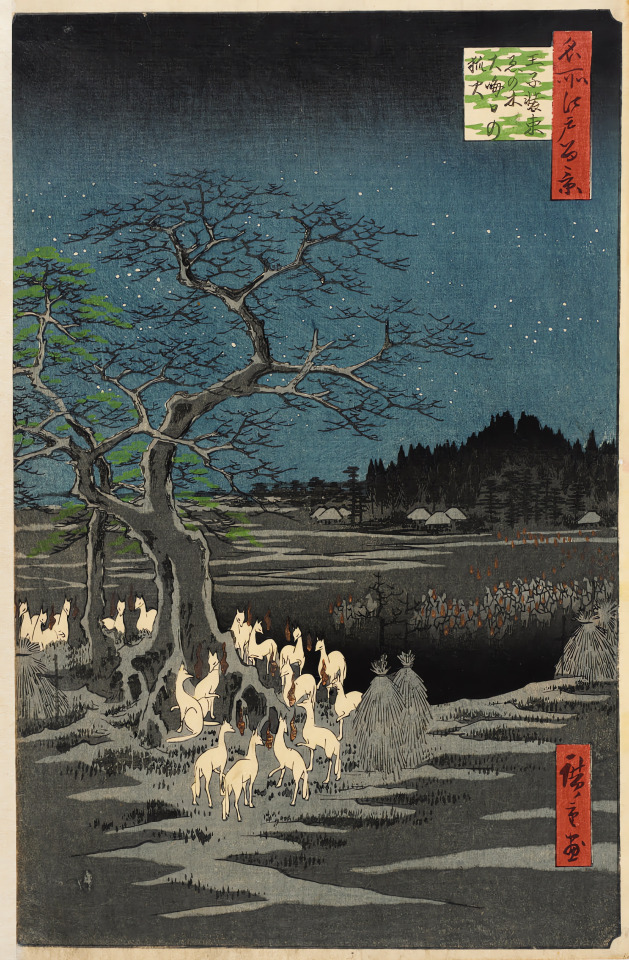
Hiroshige, Foxes Meeting at Oji (1857)
361 notes
·
View notes
Text
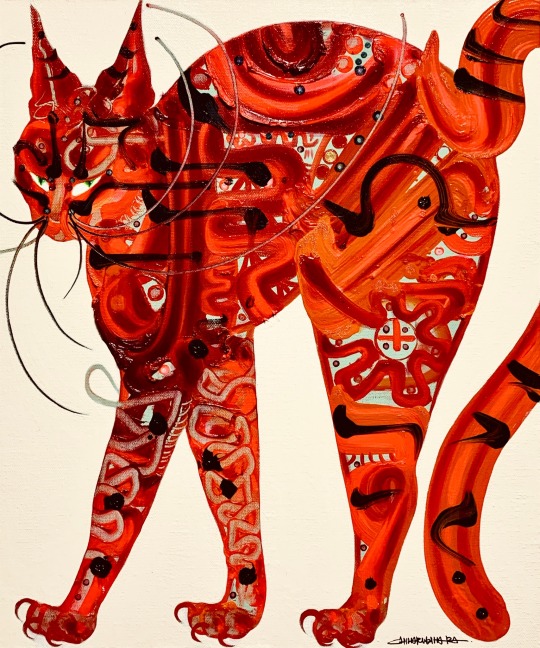
ANGRY CAT 2022
oil on canvas 455×380㎜
Chiharu KIHARA
——
🟥木原千春 個展 Vitalism X
PART1. 2022. 12/17-12/26
PART2. 2023. 1/7-1/15
@roidworksgallery
#chiharukihara#japanese art#木原千春#contemporaryart#artists on tumblr#japanese#art#cat#roidworksgallery#vitalism#猫#浮世絵#animal#ネコ#angry#怒る#angry cat
871 notes
·
View notes
Text
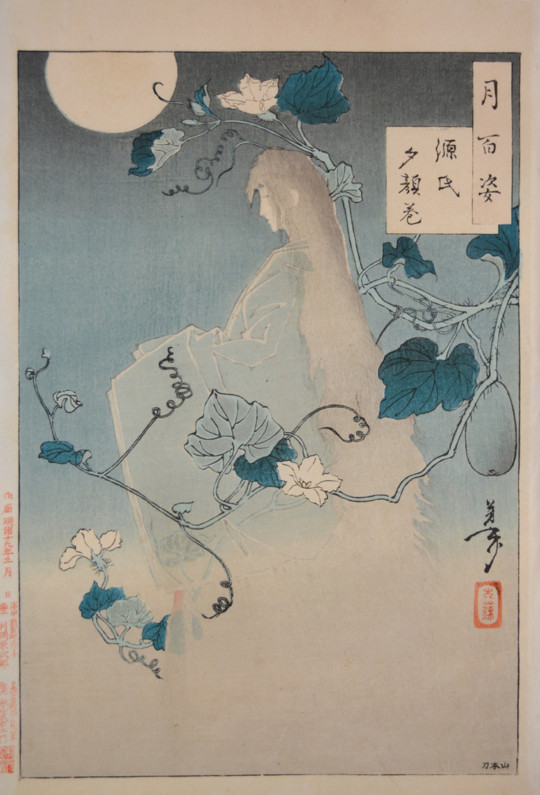
Tsukioka Yoshitoshi,
Yugao Chapter from the Tale of Genji [1886]
116 notes
·
View notes
Text


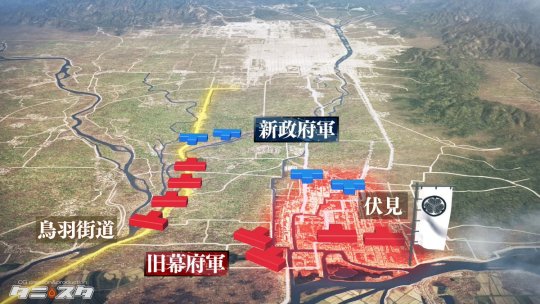


Sean bienvenidos Japonistasarqueologíacos, a una nueva publicación síntesis, del país del Sol naciente, una vez dicho esto póngase cómodos que empezamos.
-
Vamos a hablar de la batalla de Toba-Fushimi 27 de Enero 1868-31 Enero 1868, que forma parte de las Guerras Boshin, de carácter civil.
-
Está batalla la vamos a ver a través del arte que fue realizado por Tsukioka Yoshitoshi, perteneciente al Ukio-e.
¿Conocían la batalla?
-
Espero que os guste y nos vemos en próximas publicaciones, que pasen una buena semana.
-
日出ずる国から、日本の考古学へようこそ、新しい要約出版物へ。
-
民事上の戊辰戦争の一部である、1868年1月27日から1868年1月31日にかけて行われた鳥羽・伏見の戦いについてお話します。
-
浮世絵に属する月岡芳年の作品を通して、この戦いを見てみます。 彼らはその戦いを知っていたのか?
-
気に入っていただければ幸いです。今後の投稿でお会いしましょう。良い一週間をお過ごしください。
Welcome to Japanese archaeology, to a new summary publication, from the country of the rising sun. Having said that, make yourself comfortable and let's get started.
-
We are going to talk about the battle of Toba-Fushimi January 27, 1868-January 31, 1868, which is part of the Boshin Wars, of a civil nature.
-
We are going to see this battle through the art that was made by Tsukioka Yoshitoshi, belonging to Ukio-e. Did they know the battle?
-
I hope you like it and see you in future posts, have a good week.
#日本#歴史#ゲラボシ#鳥羽伏見#明治時代#戦争#浮世絵#美術#月尾嘉男#将軍#総力戦#京都#レジオンデカンサイ#-#japan#history#Guerraboshin#TobaFushimi#Meijiperiod#War#ukioe#art#TsukiodaYoshitoshi#Shogun#totalwar#Kyoto#regiondekansai
27 notes
·
View notes
Text

Consider 葛飾’s 蛸と海女 (Octopodes and the Sea Woman).
“My wish comes true at last, this day of days; finally I have you in my grasp!”
12 notes
·
View notes
Text

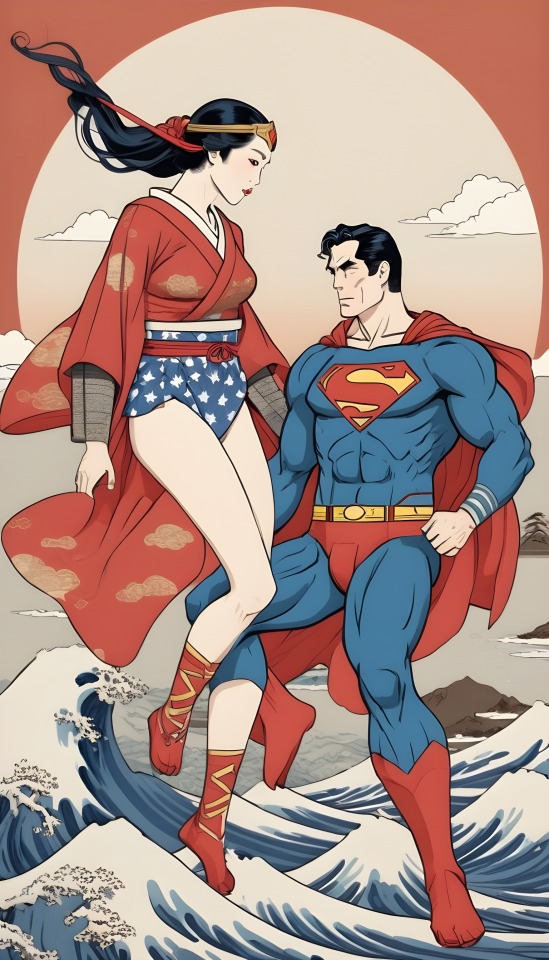


Wonder Woman & Superman in Ukiyo-e style, generated with Freepik
#浮世絵#ukiyoe#superwonder#wonder woman#superman#ai generated#ai art#my edit#japanese style#artificial intelligence
8 notes
·
View notes
Text

Introduction about My Original Artwork of Woodblock Printing.
When I wrote my last article, what I had in mind was that I would work for income more from this year.
(What follows in this parentheses is a bit long talking that has nothing to do with the main topic of this article and this time printmaking, but let me talk.
For the past few years, I have been doing ukiyoe reproducing without considering profitability. Because, there were looked for me various contradictions fundamentally in the traditional ukiyoe reproducing. But, basically, such those issues I found seemed a kind what was difficult for people to understand. It seems difficult matter for people even to imagine, including for experts. Actually, it was difficult also for me for a long time to understand why so, why such ukiyoe reproducing done by the first class people from the very past gets fraud or contradiction easily from the early step in a project of ukiyoe reproducing. But, I now think as the reasons, that carvers' and printers' knowledge about the materials and skills nowadays includes some many that were established after the Meiji era, ukiyoe reproducing has an aspect or element as a new tradition after the Meiji era, reproducing same ukiyoe print truly as it was in the Edo era is originally out of carver's and printer's concept of skills, and researching and understanding about ukiyoe reproducing has not been developed so much that such those are recognized well. Therefore, contradictions or frauds would inevitably arise from those.
Anyway, putting aside such my opinion, but please compare and observe the prints of the original and the reproduction more than anything. And please get to recognize the differences between the original print of the first edition and the reproduction of that, in terms of the materials use as paints and paper, and the skill qualities of carving and printing as line chipped, line distortion, color misregistration, color grazed, etc. Because, that seems to be very important to understand what ukiyoe reproduction is after all.
I'd like researcher or scientist particularly who relates a ukiyoe reproducing project to clarify such those differences between the original and the reproduction by doing comparative observation, as the basic knowledge for reproducing. And also to look and verify carver's and printer's theory of ukiyoe reproducing. Why does he retouch the line finally despite he traces it from the original very carefully using a latest equipment saying himself as if he tries to reproduce the same line? Why does he have no interested in the original paints and paper of the original of the Edo era? Please look and verify their theories behind those matters. Is that really what focuses on reproducibility or results to same ukiyo-e print of the Edo era ?
I consider the fundamental cause why ukiyoe of the Edo era have not been able to reproduce truly is that organizing concepts or theories is not done properly with verifying among persons who relate a project of ukiyoe reproducing, not lacks of the materials and the skills of carver and printer nowadays. Being adopted a theory which promise from the first to be making an modern improved ukiyoe print inevitably is the most cause why not done truly, I consider.
Talking a little long, unrelated the main topic of this article. But I as 19 years old started to do woodblock printmaking. I then became a printer, having a will which I someday in the future would reproduce ukiyoe in the truest sense, but such my idea was too different from the concept or theory of the traditional ukiyoe reproducing. So, I quit a printer and worked for it individually, but that was difficult to make a living. And I in the last year decided to put a period to such my work, but, as the period, what I left to say was such like that.)
Anyway , now let turn the main topic that is the printmaking this time.
So, when I thought about income, I came to think that if for income, is it better to make a something original print with ukiyoe or shi-hanga style than reproducing? In actual, such kind of wood block prints has recently been produced frequently by various publishers. So, I this time tried to make such one.
Concerning specifically what I made, I from the past have had an idea that something nice print could be born if I make woodblock print from a vintage photo postcard as the following, which began to be frequently produced about the turn of the 20th century. So, I this time put it into action.

Concept of this time printmaking is "making a nostalgic and beautiful print". For me, one of the charms of ukiyoe and shi-hanga is nostalgia, showing the old days.
But, what is more important than that as the concept is making a beautiful print.
Although I already mentioned about income as the background of this time printmaking, it seems important for that to make a beautiful print which makes people happy to appreciate. Actually,Ididn't have such idea so much in my past reproducing work, because reproducing same ukiyoe print thoroughly seemed for me essentially different matter from making a beautiful ukiyoe reproduction.
About the Design
This time I was inspired from this postcard and made the design. I'm not sure when this postcard was made, but since the postmark is 1939, so it would have been made around that year. It shows Shinobazu Pond with lotus flowers blooming in summer, in Ueno Park.

About the Materials
As woodblocks, I used a cheap cherry one for the keyblock. And, katsura and japanese lime for the color blocks. I didn't use expensive hard cherry wood block of good quality, because even those cheap wood blocks I selected seemed to be enough for the expression this time, and also l didn't have an idea to print in a large quantity.
As paper, l used handmade washi which I bought a little long time ago and left. Not sure though, it would be mulberry with pulp. I selected it thinking it responses enough for making a beautiful print.
As paints, l used chemical ones which a traditional printer nowadays has been using generally for reproducings of ukiyoe and shin hanga.
About the Carving&Printing
I didn't pursue too much the skills like which carver and printer normally do nowadays, particularly as the following.
·Carving lines without chipping.
·Carving smooth lines.
·Printing without color misregistration.
·Printing without paint grazing.
·Printing without paint accumulation ("tamari").
·Printing without paint stain in a superfluous area on a print.
The reason why I so was just for the expression, just for the taste of the print this time. But, as a premise of that, I have an idea as the following.
Such those kinds of carver and printer skills relate to beauty just only until a certain level.
What I mean is, when we look the original prints of ukiyoe and shin hanga (not reproductions at the present), there are many beautiful prints in spite of such skill matters aren't done so well. Especially in ukiyoe of the Edo era, it's normal it has some roughness parts in its skill quality. But, that seems natural matter, thinking that it in the Edo era had been produced very speedy by several hands from master to apprentices together. And also, since the skill level of carver and printer advanced around the Meiji era, a case also happens which even it was normal or good quality from the perspective of people of the Edo era, it looks to have noticeable roughness parts from nowadays. Even it's the first impression of the first edition which was careful made in the Edo era, it seems to have roughness parts usually if we look closely.
Also in the shin hanga, it doesn't seem rare that it has some roughness parts in its carving and printing if we look closely, though those would have been basically done as intentional expression in the case of shin hanga.
So, anyway, how much are such roughness parts in carving and printing related to the beauty of the print?
I think the first edition made carefully is more beautiful than its later edition made roughly. But, it's not rare even such first edition has some roughness parts.
And, is the beauty of that print spoiled by those roughness so much? Or, would the image become more beautiful if those roughness are well fixed in reproducing? I don't think it's either.
Therefore, it seems for me that the high skills of carver and printer relate to beauty of a print just only until a certain level, and unrelated over that level.


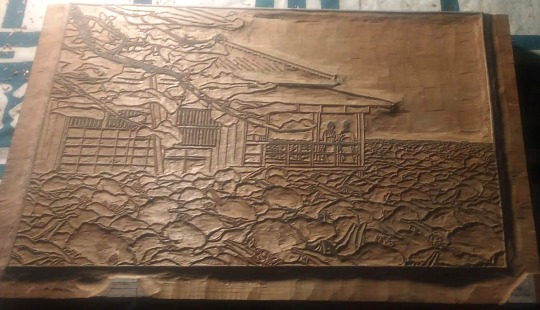
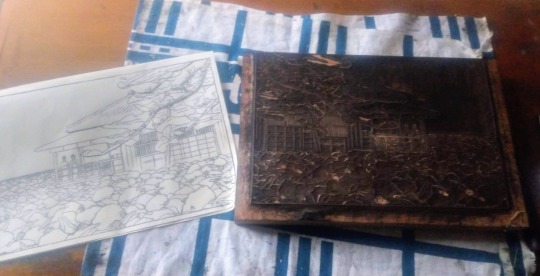

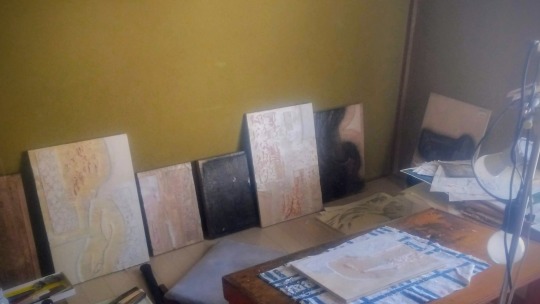
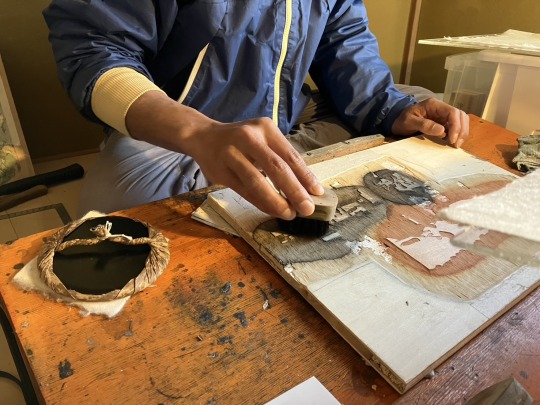
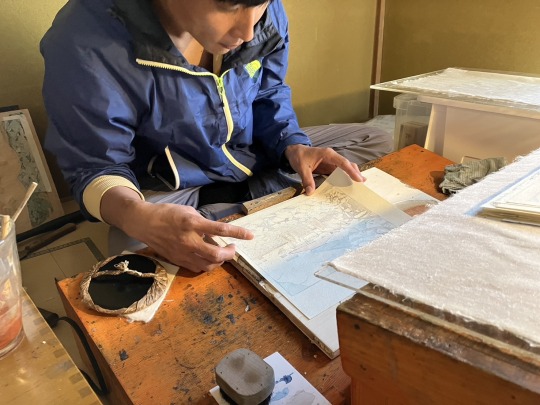


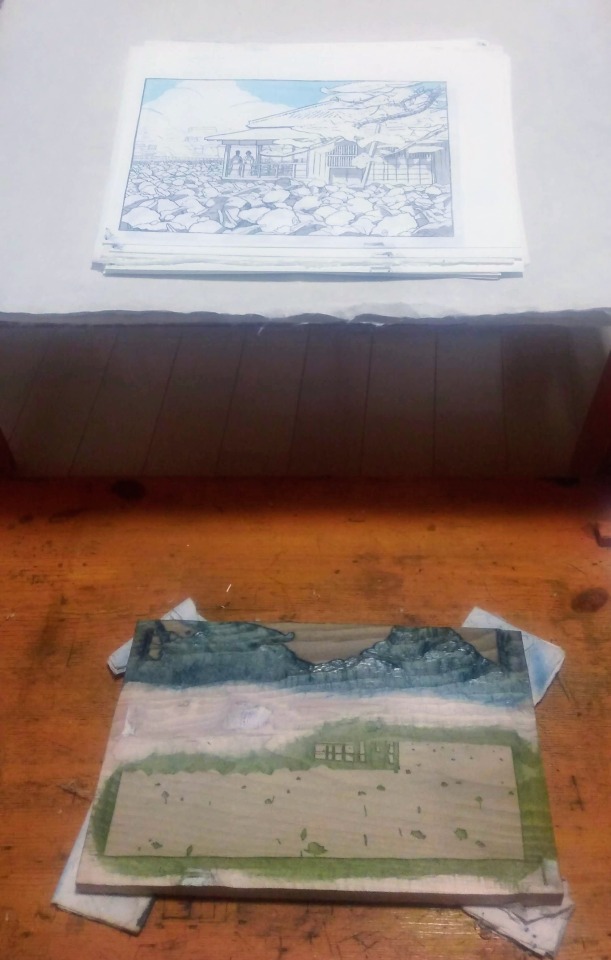


I this time printed 26 color impressions.
About Sale
Printmaking this time was so fun and comfortable. From the early step of the process, I could get something good feeling that a nice print could be born naturally, and also various nice images for the next prints came to my mind. However, whether I'll continue this project or not depends on its earnings.

Title: Ueno Park, Tokyo, 7, 1938
Paper size: 29×20.5 cm
The circulation is 23 of a limited edition. You perhaps wonder why it's such a small quantity. But, it's enough many from my sale ability at the present. I would make it more in the future new prints if people who would like to purchase my prints would appear in the future. But, in actual, if there were 20〜30 people who would like to purchase my prints around the world, that's Really enough for me.
It's available for sale in the following link.
If it would not be sold well, I will start again to make ukiyoe reproductions for vendors, as I had been doing in the past temporarily. That's not a work with publisher since I quit a printer years ago and not a carver from the first. That is a work which making in a large quantity in a cheap price while saving cost. But, that is what should be reached to an average level of ukiyoe reproduction in the market. That is a rewarding job also.
(I mentioned in the previous article, that I from this year would make ukiyoe eproduction including current condition. But I decided to stop that due to the sale risk. )
3 notes
·
View notes
Photo

Reposted from @bikeart.gallery "Bicycle Ukiyoe Ad." Japanese Pist girl designed by @naga0708 "As one of the last countries in the world, Japan is currently still keeping its borders closed to foreign tourists. However, it was announced that Japan will reopen its borders to travelers on guided tours from June 10th 2022. Welcome to Japan. We hope you enjoy traveling and cycling in Japan." . . . . . . . . . #roadbike #randonneur #mtb #3rensho #ukiyoe #浮世絵 #manga #illustration #illustrator #theradavist #japanesculture #pistbike #simworksusa #bluelug #bikeart #bikeartist #fixedgear #roadbike #biciclette #fahrradliebe #cyclingphotos #painting #illustration #art #drawing #graphicdesign #artwork #bicycleart #cyclingillustration Visit Hizokucycles.com for all kinds of cycling gear 🤘 https://www.instagram.com/p/ClAnNKirgU1/?igshid=NGJjMDIxMWI=
#roadbike#randonneur#mtb#3rensho#ukiyoe#浮世絵#manga#illustration#illustrator#theradavist#japanesculture#pistbike#simworksusa#bluelug#bikeart#bikeartist#fixedgear#biciclette#fahrradliebe#cyclingphotos#painting#art#drawing#graphicdesign#artwork#bicycleart#cyclingillustration
43 notes
·
View notes
Text

喜多川 歌麿 『姿見七人化粧 びん直し』
Kitagawa Utamaro Bin naoshi, from the series "Sugatami Shichinin Keshō," circa 1792 –93.
Museum of Fine Arts, Boston.
10 notes
·
View notes
Photo


歌川広重/Utagawa Hiroshige
(via 山王日枝神社 / 東京都千代田区 | 御朱印・神社メモ)
24 notes
·
View notes
Text

FAUVE FOX 2023
oil on canvas 803×652㎜/F25
Chiharu KIHARA
#chiharukihara#japanese art#木原千春#contemporaryart#artists on tumblr#japanese#cat#art#roidworksgallery#vitalism#浮世絵#animal#猫#fox#fauve#fauve fox#キツネ#狐#fauvism
62 notes
·
View notes
Photo

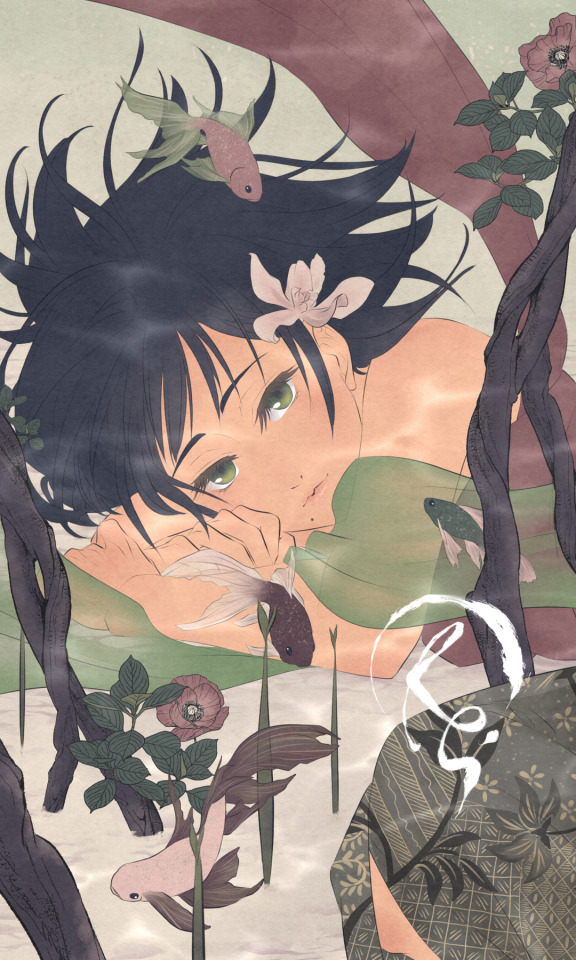
Bidadari.
#angels of kayangan#my art#digital art#digital drawing#digital painting#ukiyoe#浮世絵#bidadari#mandi di sungai#beta fish#underwater#underwater art#underwater aesthetic#batik
23 notes
·
View notes
Text
昨日の東京は雪でしたね。せっかくならと吉祥寺にある井の頭恩賜公園を訪れました。
お目当ては公園内にある弁財天さん。こちらは絵画の題材にも用いられる有名スポット。せっかくなので有名な画家たちが描いた雪の弁財天と昨日の風景を比較してみました。
●1枚目 昨日の井の頭弁財天

●2枚目 歌川広重(1797-1858)
「井の頭の池弁財天の社雪の景 (名所雪月花)」
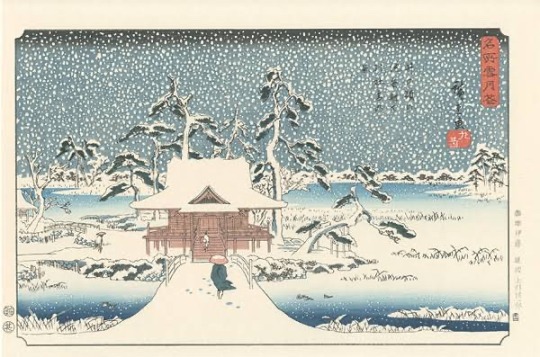
●3枚目 川瀬巴水(1883-1957)
「社頭の雪(井の頭弁天)」

時間を超えた三者三様の弁財天さん。
自分ならどのように描くだろうかと空想した楽しい雪のひと時でした。
It snowed in Tokyo yesterday.I visited the Inokashira Park in Kichijoji.
My main attraction was Benzaiten temple in the park.This is a famous spot used as the subject of paintings. I compared the snowy Benzaiten painted by famous painters with yesterday's scenery.
・First picture
Yesterday's Inokashira Benzaiten
・Second picture
Utagawa Hiroshige (1797-1858)
'Snowy scene of the Inokashira Pond Benzaiten temple ( Snow, Moon and Flowers at Famous Place)'
・The third picture
Kawase Hasui (1883-1957)
'Snow at the shrine (Inokashira benzaiten)'
The three different Benzaiten from across time.
It was an enjoyable snowy moment when I fantasised about how I would have painted them.
8 notes
·
View notes
